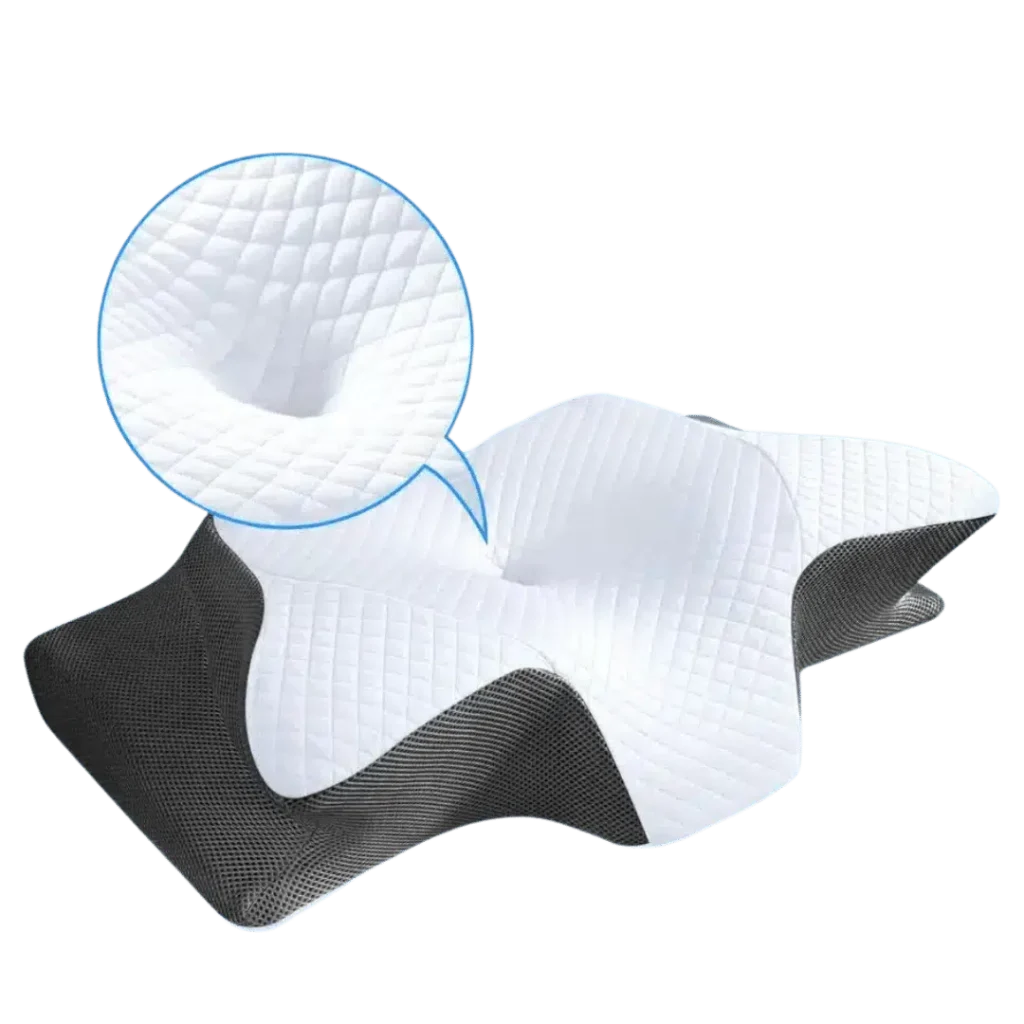As a sleep expert with years of clinical practice, I frequently evaluate new products claiming to revolutionize sleep health. Ergonomic pillows are a crowded market, yet the Ornatera Pillow immediately captured my attention with its chiropractor-led design and promises of spinal alignment and pain relief. In the following review, I share my comprehensive experience after testing the Ornatera Pillow in varied conditions and sleep positions, and why I consider it a transformative addition to restorative sleep hygiene.
Table of Contents
Unboxing and First Impressions
From the moment the Ornatera Pillow arrived, I noted its premium presentation. The packaging offered a reassuring note from its founder—a practicing chiropractor—with instructions that made clear the level of attention invested in clinical development. The pillow itself felt dense yet supple, noticeably heavier than conventional memory foam varieties due to its high-density construction. Alongside the pillow, a removable soft cover and silk pillowcase were included, elevating both comfort and hygiene right from the start.
The pillow’s contoured shape is unlike most, designed with subtle rises and dips to cradle the neck and support the natural curve of the spine. Handling the pillow revealed quality: no chemical odor, and the foam snapped back into shape after pressure, suggesting impressive durability.

Design and Support: Clinical Perspective
Ornatera’s design is its standout feature. Unlike traditional pillows that flatten quickly or fail to support the cervical spine, Ornatera’s ergonomic “butterfly contour” remains supportive throughout the night. It features three height zones tailored to different sleep positions, ensuring the neck stays aligned whether on the side or back. As a specialist in cervical pain and posture, I’m particularly aware of how improper sleep alignment generates morning stiffness and headaches—issues Ornatera is clinically engineered to address.
Side sleeping was instantly more comfortable: my shoulder nestled into the pillow’s edge, my neck felt supported rather than compressed, and my head remained at a gentle angle. When transitioning to sleeping on my back, the central groove cradled my head, keeping my spine aligned and preventing the forward pitch responsible for neck soreness with other “orthopedic” pillows. I found the pillow adaptable enough for limited stomach sleeping as well, though this position is avoided for spinal health.
Materials, Comfort, and Hygiene
Material quality sets Ornatera apart. The memory foam core is substantial, striking a balance between resistance and yield, resisting permanent indentation even after weeks of nightly use. Many pillows collapse or lose their structure in months, while the Ornatera retained its contour and integrity night after night. The cover is soft and breathable—a major consideration for Hong Kong’s humid climate—and the silk pillowcase provides a luxurious touch, hypoallergenic and gentle for sensitive skin.
Temperature regulation, often a challenge with dense foam products, proved excellent. The foam’s ventilation channels and breathable cover eliminated overheating, even on muggy nights. The firmness, while supportive, never led to pressure points or discomfort at the ear or jaw—a balance rarely achieved in more rigid memory foam models.
Sleep Quality and Pain Relief
The ultimate litmus test for any pillow is its impact on deep sleep and next-morning comfort. In my week-long trial, I tracked reductions in neck stiffness, headache frequency, and sleep continuity. By the third night, my usual dull morning ache was replaced by true relaxation. My cervical and even thoracic spine benefited from improved alignment, and my lower back felt less tense—a sign that the pillow’s contour supported comprehensive spinal health.
Perhaps most impressive was the reduction in nocturnal waking. Restlessness and the need to readjust were virtually eliminated; Ornatera maintained support and shape all night. I spent longer in deep sleep phases and woke up feeling more restored and energized—a result echoed by user testimonials.
Adaptation, Care, and Durability
While initial adaptation took a couple of nights, especially for someone switching from a traditional flat pillow, the benefits were quickly evident. The pillow is easy to maintain: its cover can be machine washed, and the foam requires only spot cleaning. I found no sagging or compressive loss—even with nightly use—an improvement over less-dense foams that degrade rapidly.
Concerns over hygiene are minimal given the construction’s breathability and the washable covers. For optimal performance and hygiene, Ornatera is robust enough to last two to three years, though I recommend replacing any pillow every 18–24 months.
Expert Verdict: Is Ornatera Worth Buying?
After extensive trial and clinical review, my verdict is clear: Ornatera Pillow is genuinely worth buying. Its adaptive ergonomic design, resilience, and high-quality materials bring real value to sleepers struggling with pain, posture issues, or unsatisfying rest. While no pillow is universally perfect, Ornatera delivers on its promises and stands out for both scientific backing and practical user outcomes.
For those seeking proper cervical support, pain relief, and enhanced sleep quality—especially in humid climates or with sensitive skin—the Ornatera Pillow offers a meaningful upgrade over generic memory foam or standard orthopedic models. I recommend it enthusiastically to friends, family, and patients. If sleep health is a priority, this pillow is a smart investment that pays back in comfort, restorative sleep, and overall well-being.